Ignition 8.1.49 Is Available, Plus Part 2 Of Our Look Back At Notable 8.1 Features
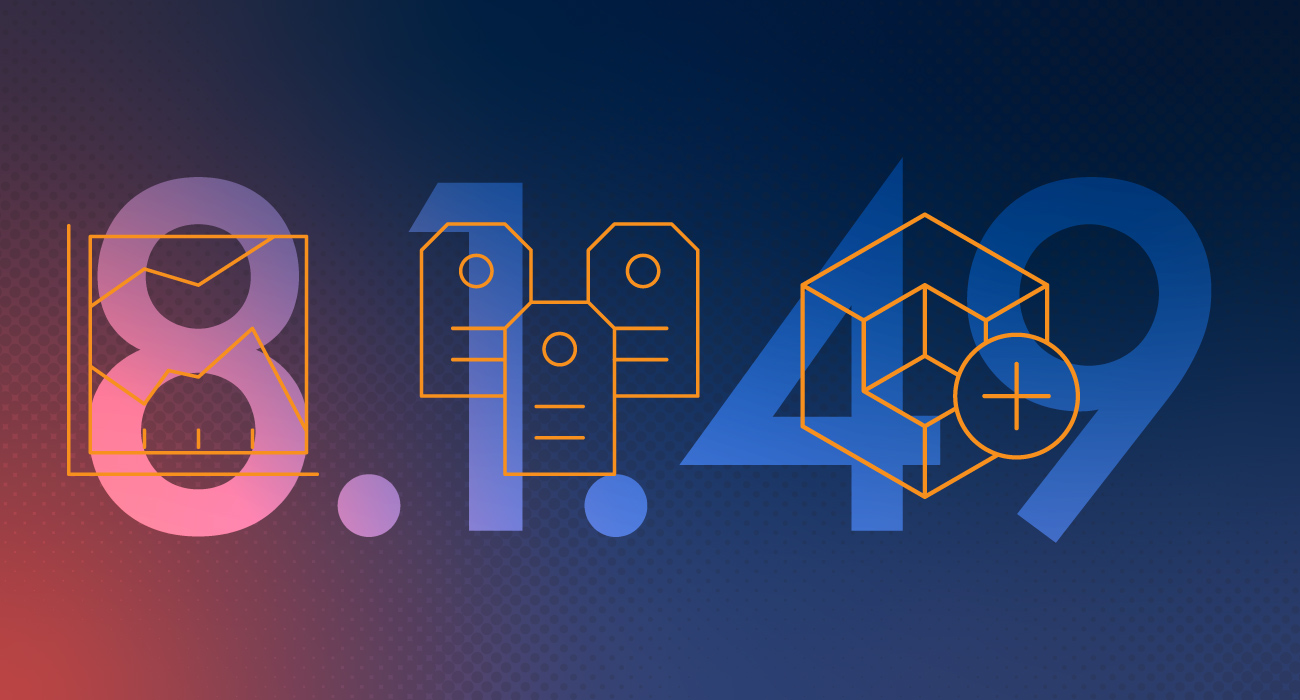
The latest version of Ignition, Ignition 8.1.49, is here! Since Inductive Automation developers are still hard at work on Ignition 8.3 (and getting close, the beta is already out), Ignition 8.1.49 mostly contains bug fixes and optimizations.
To highlight a couple of the improvements in 8.1.49 that stemmed from our commitment to continually securing Ignition, we upgraded Jetty, the core web server and web socket server/client software used by Ignition, from version 10.0.20 to 12.0.17. Additionally, we bumped Java to 17.0.15.
Since there aren’t a ton of new features with this release, we’re continuing on with part two of our look back at notable 8.1 features. In part one of our look back, we explored standouts from 8.1’s first year. This time, we’ll highlight some of the most momentous improvements in 8.1’s second year (spanning Ignition versions 8.1.12 to 8.1.22).
Reading this retrospective is a convenient way to review the “best of” features from these releases, in case there are any you could be leveraging more. Find out which features our development team considers to be game-changing, so you can improve the speed or ease of building your solutions, and deliver applications that are more tailor-made to specific needs. So let’s hop into our time machine and punch in the date that the first of these notable features emerged: the year 2021.
Metrics Dashboard
In 8.1.13, the Metrics Dashboard delivered greater customization for the type of metrics you can view. Before this, only the most critical metrics were easily viewable (things like memory and CPU usage). But we wanted to give you a single place where you could pick and choose what to monitor on a regular basis. Thus, the Metrics Dashboard was born, enabling you to select from pre-defined metrics using a convenient drag-and-drop method to create a custom solution.
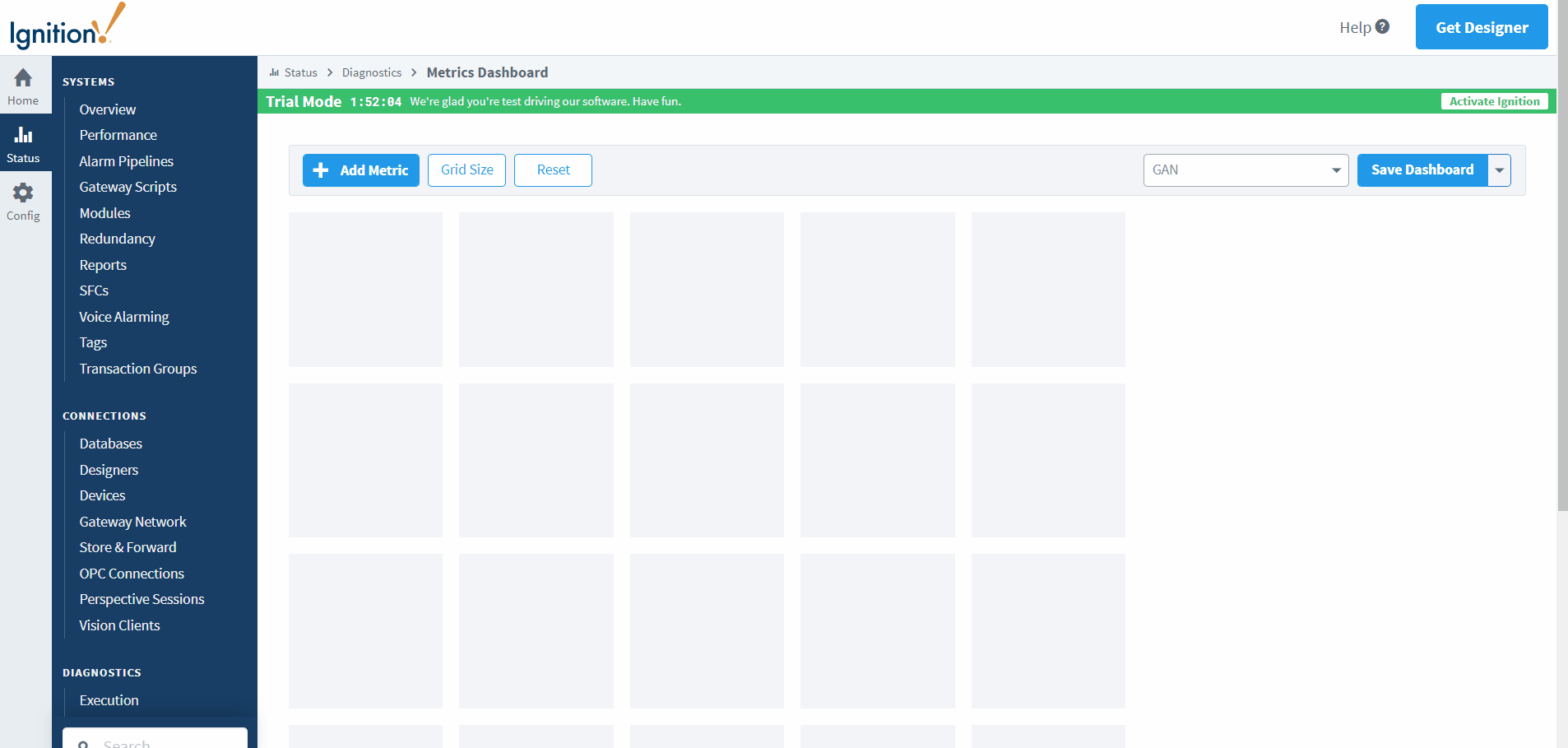
This update helped save users from having to click through multiple subsections of Gateway status pages to find the information they needed. As such, it boosted the speed of doing on-the-spot troubleshooting and analysis for key metrics.
Overall, these customizable dashboards have helped Ignition users get a better idea of how their Gateways are performing at a glance. Later on, in 8.1.37, we went even further, adding individual Gateway Network connection statistics to the Metrics Dashboard as well.
Tag Report Tool
Next stop on our historical tour is Ignition 8.1.19, which included the Tag Report Tool, an absolute gem of a feature that made it a lot easier to find specific tags in a large Ignition Gateway.

In the pre-Tag Report Tool era, if you had to search for a specific set of tags (say you had tags that were causing an issue) and you had hundreds of thousands of tags, it could take you most of an entire day to do so. Hunting for a set of tags based on specific criteria (like quality, data types, or containing active scripts, for example) would often feel like searching for a cryptic syntax error in a sea of complex code. In this unfortunate situation, the typical solutions were to manually scroll through the tag browser (not fun) or to create a heavy Python script to determine which tags had a specific quality (not something everyone wanted to do).
But this new tag management tool empowered users with a whole new UI that let them quickly build queries to search for specific tags based on its Tag Path, Quality, Types, Traits, Ancestor, and other properties. Additionally, the scripting function system.tag.query() could provide the same results in the form of a list of dictionaries that defined each tag result.
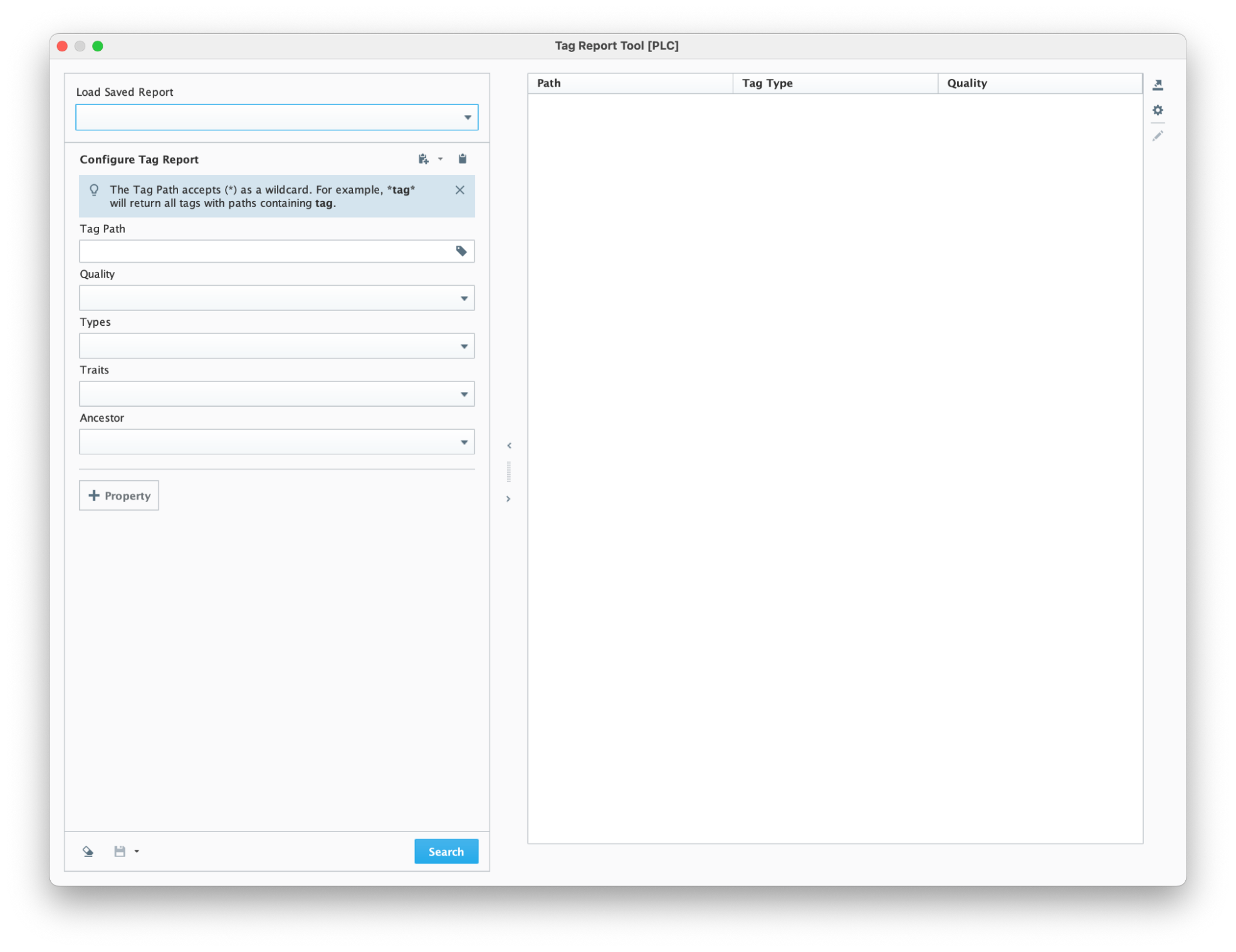
The Tag Report Tool was a truly first-class approach to generating and exporting a list of tags through an advanced UI of search parameters, improving both application development and troubleshooting to a significant degree.
Additional improvements to the Tag Report Tool came later on in 8.1.21, such as options to include UDT Members and a UDT Types Folder, an added Timestamp property for filtering and reporting, and more. Then in 8.1.28, support for “OR” groupings for property filters gave users even more flexibility with their search parameters.
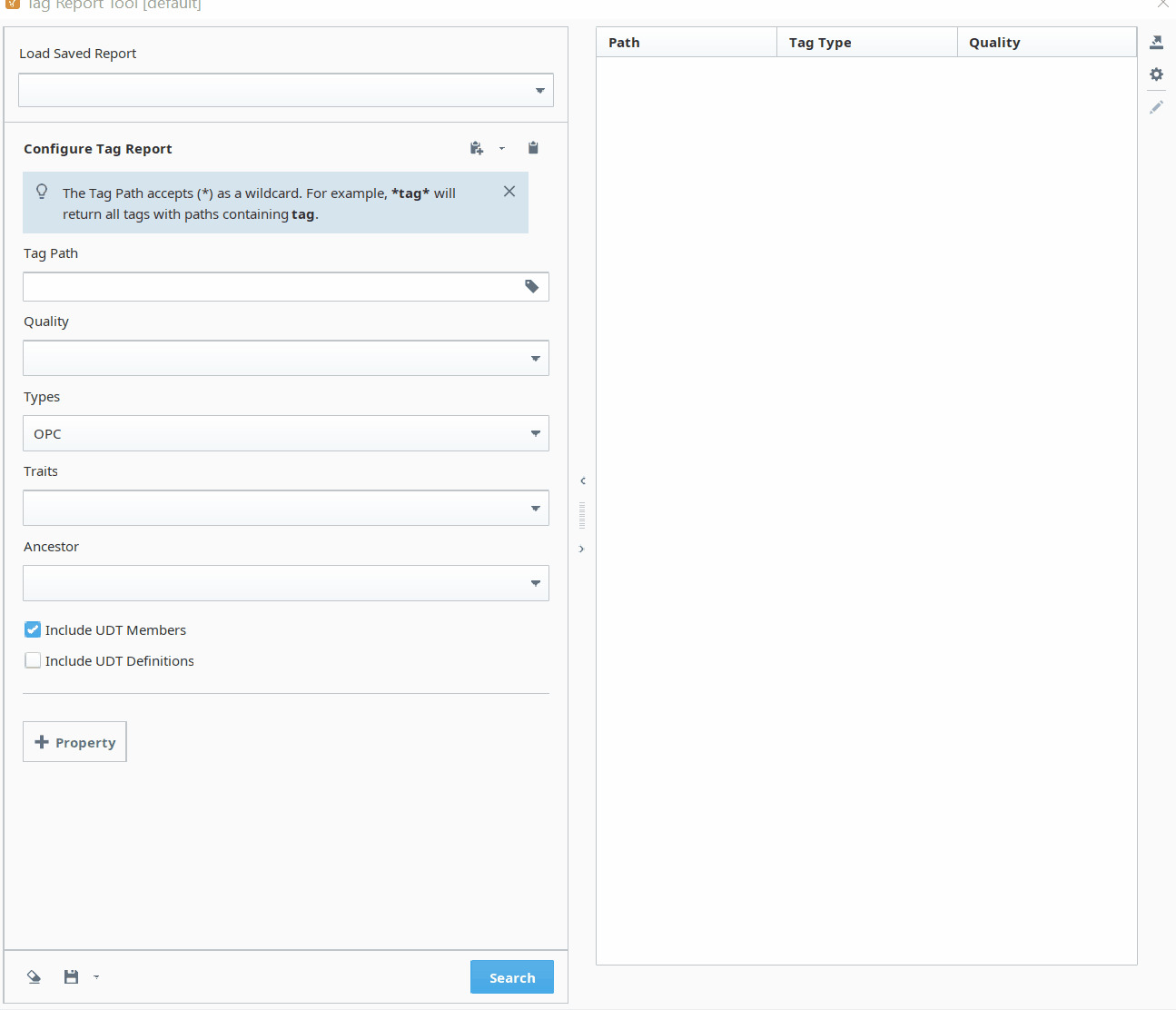
Perspective Co-Branding
We’ll move on now to 8.1.20, when the introduction of the Perspective Co-Branding setting meant you could customize the look of sessions and put your own branding mark on projects in Perspective.
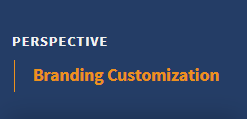
The co-branding feature enabled customization of logos, favicons, background colors, buttons, and text, along with the Perspective loading and login screens, and even the color of the Gateway’s Session Status banner.

Plus, you could customize the About button and the About popup with a user-defined view path.
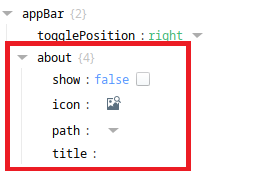
All this meant an application could have consistent, customized branding across it, and end users could have a user experience that fit in seamlessly with their organization’s signature style. And the ability to brand a Perspective application opened up more doors for Ignition developers, enabling them to take on client projects that required specific branding demands.
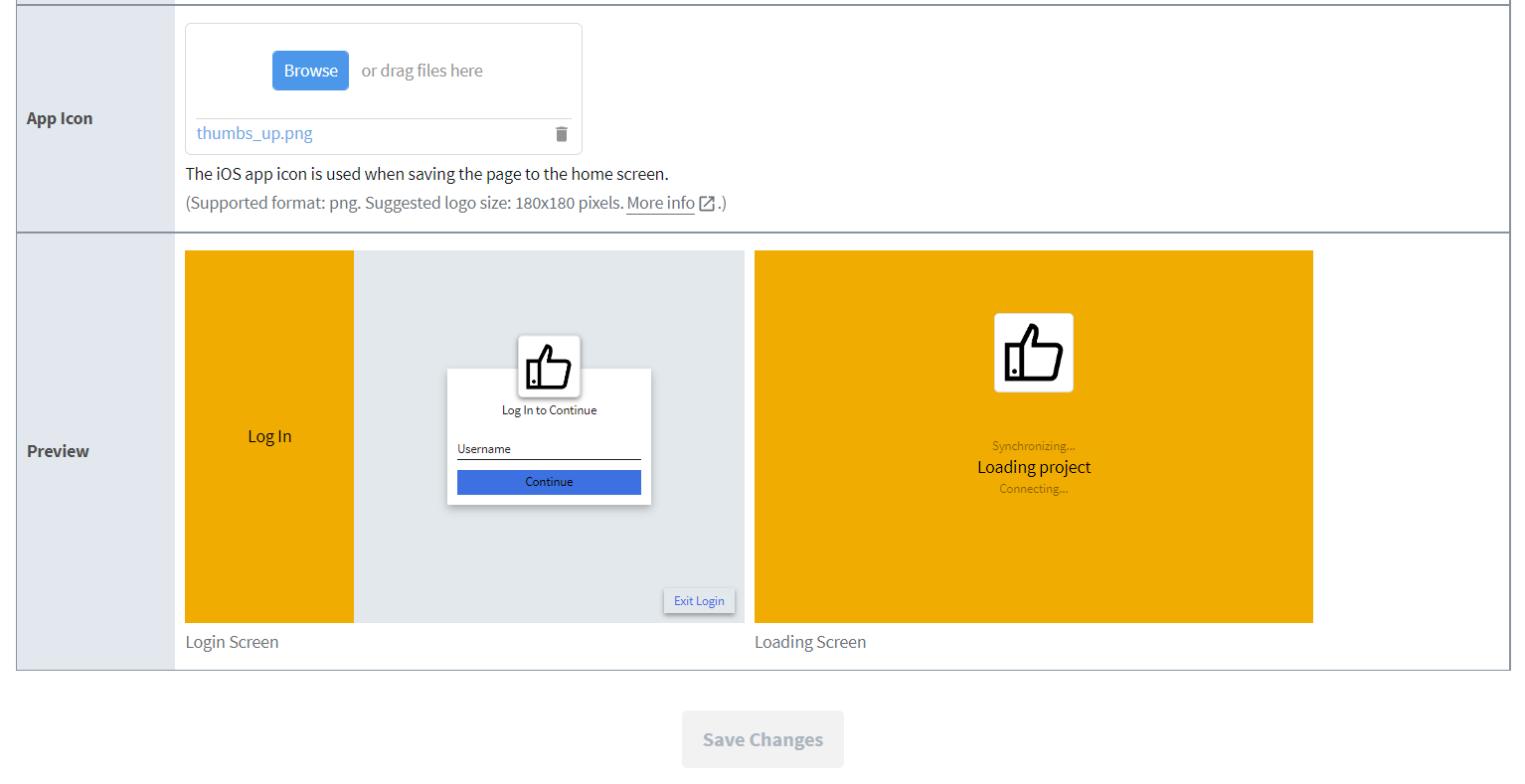
SVG Importer Enhancements
In 8.1.22, a couple of major improvements to the SVG Importer infused a new level of artfulness into the process of designing automation solutions.
First, we added support for the most common SVG elements. This enabled compatibility with a lot more unique SVGs from external sources, and decreased the likelihood of incorrect renderings.
We also added a convertToDrawing function (which you can access in the Designer’s right-click menu), enabling you to transform standard Perspective components into SVG structures. This function can be used for components such as Cylindrical Tank, Icon, Linear Scale, Moving Analog Indicator, Sparkline, Thermometer, All Symbols, and Coordinate Container (containing pipes). The new function provided Ignition users with the power to animate these components in their own custom way, and was especially handy for creating fancy HMI animations, such as showing something moving down an assembly line.
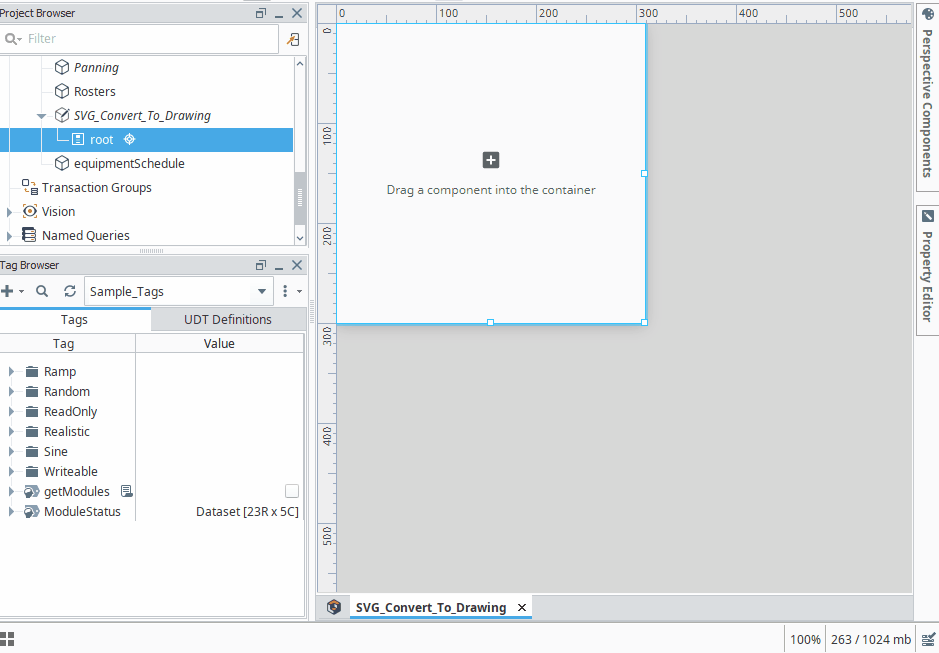
Overall, these improvements helped unlock even more creative freedom for those designing in Ignition, and some truly stunning screens emerged on plant floors as a result.
Perspective Configuration Explorer
We’ll round out our spotlighted features with one that also came out in 8.1.22, Perspective’s Configuration Explorer, which provided an easier way to locate all configured scripts, bindings, and events that occur within a single view.
Previously, if you were looking at a complex Perspective view and trying to figure out things like what kind of scripts were being run or what kind of bindings were being configured, it could be very tedious.
But the emergence of this new UI made figuring out these types of things a whole lot simpler, so if you needed to locate a binding that was causing an issue, for example, you could accomplish it easily. Users could quickly generate a filtered list of Perspective configurations within a specific view and easily navigate it. Whether for troubleshooting purposes or continuing development on a project, this new ability proved to be quite handy!

Have You Explored The 8.3 Beta Yet?
Find out more about the updates to 8.1.49 in the release notes and the Ignition user manual. And please head over to the ideas portal if you have any ideas to improve Ignition.
Ignition 8.3 will be here very soon, with a bevy of brilliant new features for building industrial control systems of the future. In the meantime, don’t forget to download the beta and explore the new features. Please let us know in the Ignition Forum both what you love about it and what needs work! In the Ignition community, your voice counts for a lot, and we try to incorporate as much of your feedback as possible.
Also, if you haven’t yet upgraded to Ignition 8.1, now’s a great time to do so, so you can have access to all the powerful features we’ve covered today. Plus, if you get a support plan too, you can upgrade to 8.3 for free when it’s released.
In the meantime, keep an eye on the blog to catch the next Ignition release train, coming soon!
